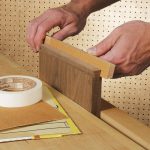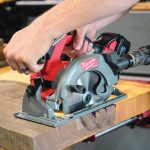We may receive a commission when you use our affiliate links. However, this does not impact our recommendations.
 Morgan library pieces get extended shelf life.
Morgan library pieces get extended shelf life.
The call came as monumental calls do – in the middle of hanging upper cabinets.
“My name is D—, and I need you to build me two walk-in closets using J.P. Morgan’s Library.”
I sent a tack into the cabinet, stepped onto the porch, and asked D— to please repeat herself.
“I’m purchasing about 20 pieces of J.P. Morgan’s Library – the financier, who lived at 36th and Madison in New York? I need you to rebuild it into closets.”
On an August day, I drove to a church warehouse that had no lights but did have water – in huge foul-smelling puddles that threatened to overtake the pallets on which the shelves sat.
The beam of my MagLite revealed shelves almost 10′ high, built in cells of three or four, each 3′ across. I clattered over a pile of tarnished brass railings to get a better look. The backs and uprights were made from walnut veneer with an oak core. The huge crown was built up from solid walnut. Instead of fascia board there were inset panels with proper rails and stiles, and a raised medallion in the middle with a copper number affixed, oxidized to a chalky green. Pediments separated individual runs, dadoed dentils with hand-carved teeth sat beneath the cove at the top of the moulding. Brass registers fit neatly into the bottom panels. On the back of each cell was a looping scrawl of yellow chalk.
One week and a few slipped discs later, we had the beasts strapped in the back of a truck. I rolled down I-95 awestruck. I’ve got J.P. Morgan’s shelves, patinaed with his cigar smoke, once repositories of America’s most esteemed private collection. Now we got to take them apart.
Drawn up personally by Charles McKim of McKim, Meade and White, the shelves and the library itself were meant to define the uniquely American “Age of Elegance.” But who actually built the shelves? A German cabinetmaker hired by McKim, I was told by the sellers.
While I could not verify this, I nevertheless imagined him, newly emigrated and nervous about his broken English, as he unloaded the finished shelves from the back of a canvas-covered horse cart.
Real or not, the German artisan came to life in our shop, shuffling here and there in his leather apron, twirling his chalk in his fingers, and peering over our shoulders.
“Zees wheel neva verk … and zee dentils? Zee order veel be all wrong …” he says in a thick accent, as we set the crown on the chop saw for a compound miter.
On his advice we constructed a jig for cutting miters, dusted off the 24″ pullsaw, and muscled that crown into shape. Seeing his chalk numbers on the backs, we understood how the individual pieces of the crown fit together. Hearing his yavol and neins in our heads, we did our best to be attentive to the old-timer’s lessons.
We moved on to the details of the millwork, creating the drawer fronts from the back from one cell, laying out a continuous grain with minimal walnut trim around the perimeter. We made low-angle shoe shelves and individual cabinets from other pilfered backings. Schön, I imagined him saying, nodding his head. At other times he felt conflicted, yanking out his last remaining strands of gray hair as we dismantled and reconstituted his babies.
We finished the shelves with Waterlox, unsure whether the fumes or just the high of accomplishment created the vision of our German disappearing back into the grain of the walnut. As he receded back into the wood, we all swore we could see him wink. –Brendan Isaace Jones
Here are some supplies and tools we find essential in our everyday work around the shop. We may receive a commission from sales referred by our links; however, we have carefully selected these products for their usefulness and quality.



 Morgan library pieces get extended shelf life.
Morgan library pieces get extended shelf life.






